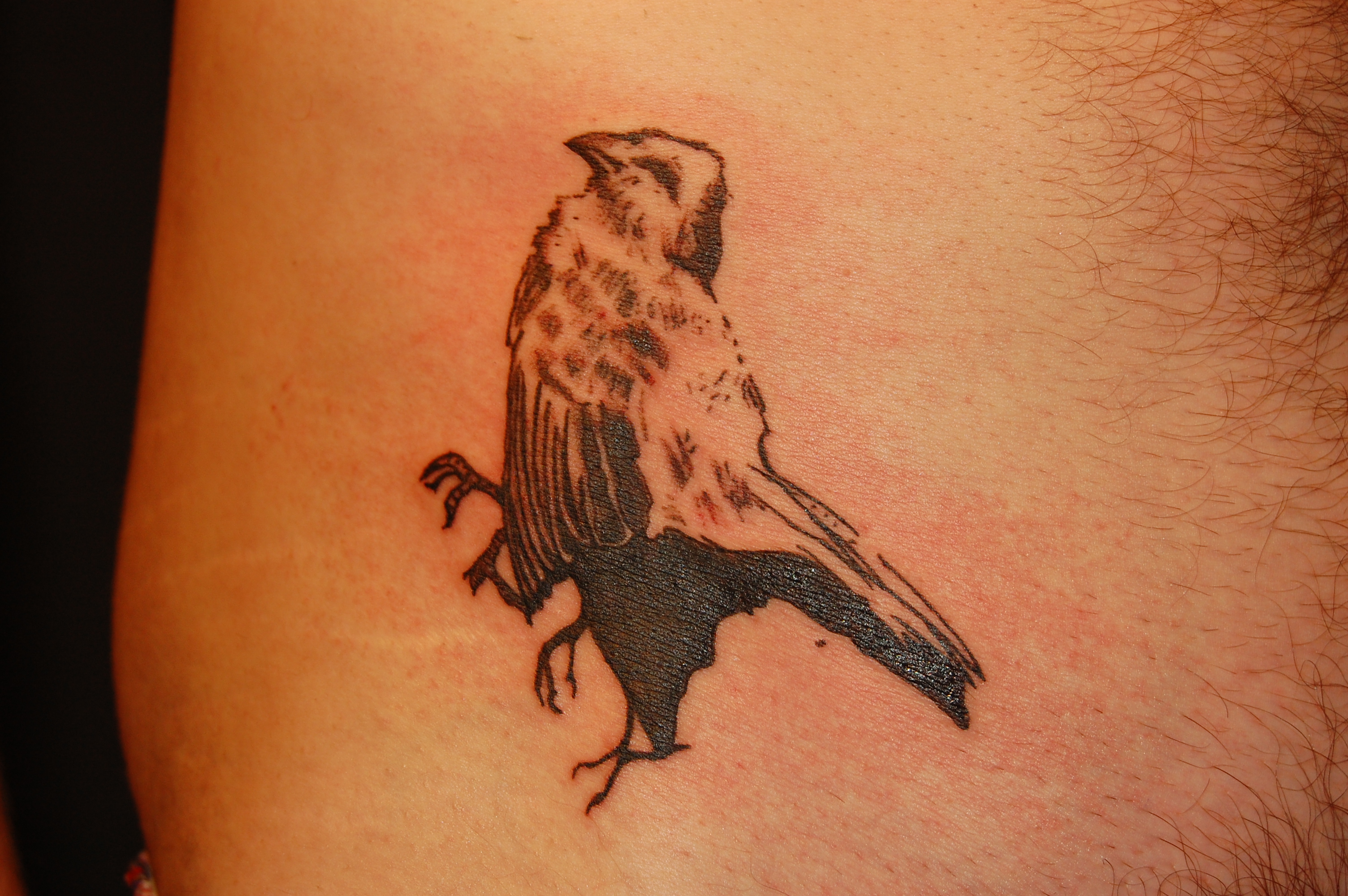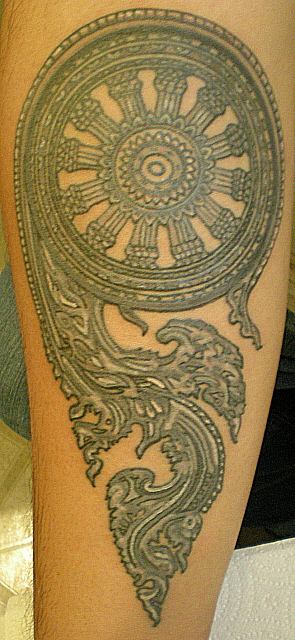Title of Work and its Form: ”In the Skin,” creative nonfiction
Author: Ruth Awad (on Twitter @RuthAwad)
Date of Work: 2009
Where the Work Can Be Found: The piece was published in September 2009′s Issue 2.1 of Sweet: A Literary Confection. (That’s a very cool journal, folks.) You can find the piece here.
Bonuses: Ms. Awad is a talented tattoo artist; take a look at some of her work. Here is a poem Ms. Awad published in Rattle. Here is a poem Ms. Awad placed on the Missouri Review web site. Here is an Awad poem that was published in New Republic. (Go ahead; be jealous of Ms. Awad for all of her laurels…I am, too!)
Element of Craft We’re Stealing: Material
Discussion:
Through the course of fourteen sections, Ms. Awad confronts two big narratives:
- How she dealt with her parents’ separation and the obligations she felt (and still feels) to both of them.
- How she learned the art of tattooing, which she calls, “my inheritance, a trade to keep me afloat should I ever need it.”
The first section begins as Ms. Awad’s mother begins the tattoo lessons and the piece alternates between the parent narrative and the body art lessons. As you might expect, the two threads entwine at points. Ms. Awad tattoos her mother for the first time and is greeted with a less-than-favorable reaction when her father sees the new cedar tree on her forearm. The piece ends with what may be one of Ms. Awad’s most powerful inner truths; getting and receiving tattoos “form patterns. They form maps.” These guideposts lead her to understanding her mother.
Ms. Awad employs a technique that I’m thinking of calling the “flood and release.” Section One of “In the Skin” establishes a TON of pathos. Ms. Awad points out that her mother and father are separated by 445 miles. That there is friction between ex-husband and ex-wife and the protagonist is dealing with the kind of resultant trauma that you might expect. That the parents had been separated for eleven years-since the author was seven. There are lots of balls in the air! Lots of emotion!
Then she “cuts” to the first bit of inside information about tattooing. What’s the effect of such a technique? If you drop a massive bomb in your work and then don’t deal with it for 200 pages, you have a problem. Think about Thanksgiving dinner. If your nephew comes out of the closet as the turkey arrives at the table, most people would be hard-pressed to decide between white meat and dark meat. No matter the reaction to the nephew’s exposition (one of instant love and acceptance, one hopes), a writer mustn’t keep the reader in too much suspense.
Ms. Awad doesn’t keep the reader waiting too long and the effect of the “flood and release” is to allow the reader to contextualize the situation. Ms. Awad also avoids melodrama in this way. We all have boundless empathy for children who have the same problems, so Ms. Awad vents a little bit of steam, reminding the reader that he or she should enjoy the work as a piece of literature.
Creative nonfiction/memoir/personal narratives, whatever you want to call them, are dedicated to finding a way to use the magic of language to communicate something meaningful about ourselves. We’ve all likely endured some kind of trauma, so unless we have suffered some extreme misfortune, our stories may not be compelling on their own. We therefore need to MAKE our individual stories compelling…while telling the truth, of course. Ms. Awad uses her knowledge and experience with tattoos as an entry point to understanding the relationship she had with her parents.
Entry points must be logical, of course. Ms. Awad’s interest in tattoos is a satisfactory complementary issue primarily because her mother’s tattoos meant something to her as a girl and her mother literally taught her the craft. The relationship goes deeper.

Find this another images at Ms. Awad’s home page.
Yes, a writer hopes to get under the reader’s skin in a far less literal way than a tattoo artist does. Still, the two crafts are strikingly similar. Writers and artists want to shape you in a meaningful way. They both hope to leave some impression that will last forever. They’re both responding to the human desire to communicate and share their experiences. Is there really that much of a difference between this:

and a cave painting?
We all work with different canvases, but writers and tattoo artists and cave painters alike are bringing themselves in full to their work. How do your non-writing interests shed light on your experiences and choices and the man or woman you’ve become?
What Should We Steal?
- Allow the emotion in your piece to ebb and flow. While the emotion and tension in your work should probably build according to Freytag’s Pyramid, you don’t want to reach these peaks like a rocketship soaring into the sky.
- Mine your interests and other skills to enhance your creative nonfiction. You’re more than your personal experiences. How, for example, does your love of baseball cards help you tell the story of your turbulent childhood?

